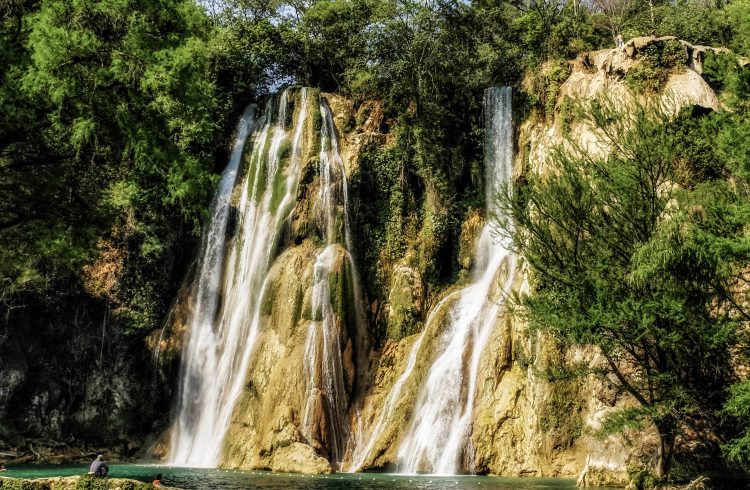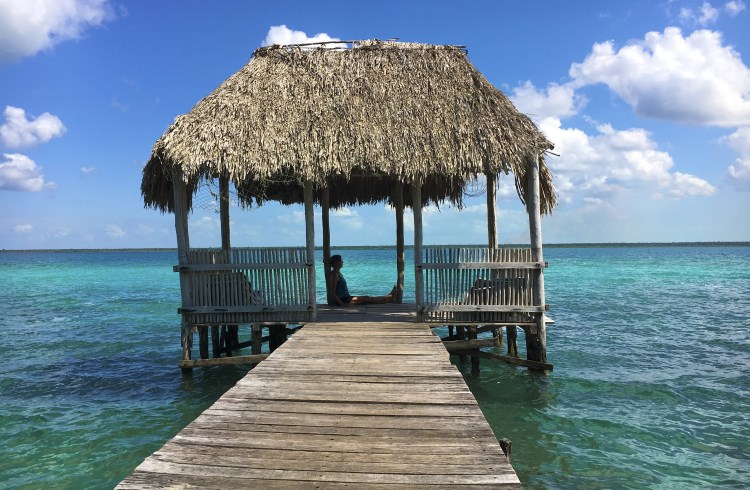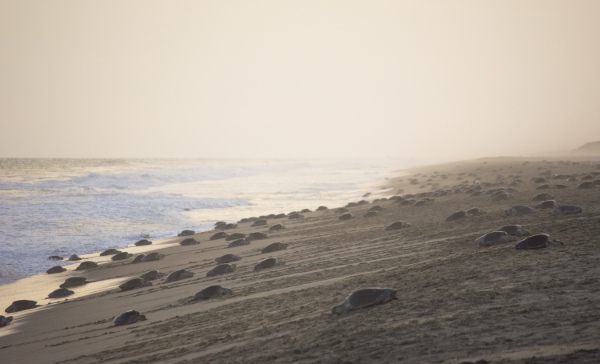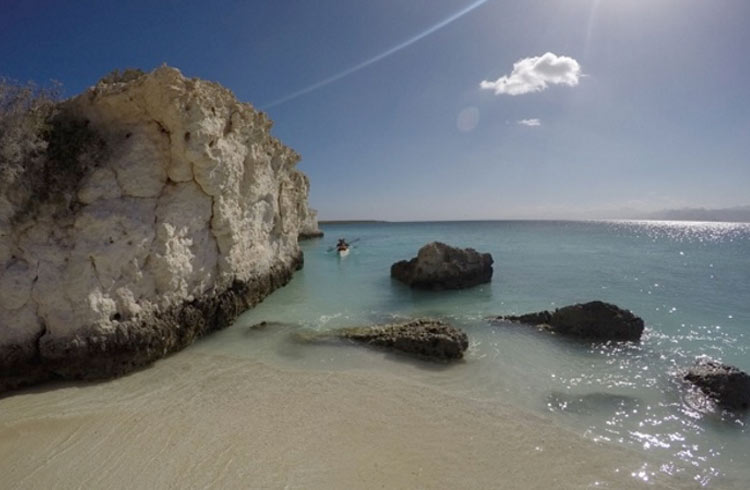From Selva to Sierra: Exploring Mexico’s Megadiversity
Nomad Harriet shares her key spots for wildlife watching, from the vast wetlands of the Pantanos de Centla biosphere reserve to the “bat volcano” in Calakmul.
 Photo © Getty Images / Schafer & Hill
Photo © Getty Images / Schafer & Hill
Ranked fifth in the world for its megadiverse ecosystems, Mexico has rainforests, astounding coastlines, deserts, and mountain ranges, home to hundreds of bird and animal species.
Usumacinta River
Triumphantly brushing the last few fire ants off my feet, I turn to adjust my balance in the boat and catch my breath as a flock of white egrets takes off and flutters across the river with a few papery beats of their wings. It’s just past dawn on a November morning, and I’m in a canoe on the Usumacinta River in Mexico’s Tabasco state, approaching the edge of the vast wetlands that make up the Rbiosphere reserve.
I’m part of an interdisciplinary team of 10, brought together by non-profit organization Ninth Wave Global, to undertake a 16-day project of open exploration and environmental study. And though we range from artists and musicians to scientists and architects, we’ve bonded quickly over expedition prep; fixing poorly rigged hammocks in the lashing rain of a midnight storm where every attempt at communication brings a fresh mouthful of mosquitoes is, it turns out, an effective team-building exercise.
Those desperate moments of the night before feel distant now, and we’re all hushed as we feel the swell of still water beneath us and take in the golden landscape, cut through with a line of trees embroidered green along the horizon.
As we move along, I spot countless ospreys, brought here, like me, by the promise of a warmer winter; vultures circling above us (as though they know something we don’t); tiny, vibrant kingfishers darting along the bank. A jabiru picks among the weeds discerningly, stealthy in spite of its massive size – at almost 5ft (1.5m) tall, it’s the biggest bird I’ve ever seen. Traveling downstream, northward, towards the Gulf of Mexico, the night herons, woodpeckers, and bright-pink roseate spoonbills are gradually joined by cormorants, pelicans, and frigates. There’s a clue in the river’s name as to its ruling inhabitant – the root of "Usumacinta" meaning "place of monkeys" in Nahuatl – but even so, the deep roars of the howlers come as a surprise, creating an echo that’s almost prehistoric.
In this ancient atmosphere, it’s hard to believe that we’re so close to the single-lane tarmac road which bisects the biosphere and has caused such great gulfs to open up between the communities living alongside the river. There are reminders of the Usumacinta's history as an international trading route in the beautiful French roof tiles topping the houses of Palizada, a small pueblo mágico a few miles from the river. But with the community now hosting progressive reforestation projects, and tiny eco-tourism initiatives springing up and offering new sources of income, many locals are looking ahead to a sustainable future.

Sierra Potosina
Another treasure trove for birdwatchers, the Sierra Potosina is located in the very heart of the country, spanning parts of Querétaro, Puebla, Veracruz, and San Luis Potosí and offering everything from low, humid forest and turquoise waterfalls to high, arid desert. Great for adventurers, a trip is best undertaken with a vehicle if you really want to explore. Las Pozas, an enormous sculpture garden designed by surrealist writer and art collector Edward James near the village of Xilitla, reframed my perspective on the cascadas of the subtropical rainforest entirely.

Calakmul
Most famous – and rightly so – for its eponymous archaeological site and giant pyramids, Calakmul is the biggest of the ancient Mayan cities and, nowadays, the most remote. For wildlife enthusiasts, it’s worth the journey for the amazing variety of bats, which are at their most spectacular at the Volcán de Murciélagos (literally, Bat Volcano). Monkeys, spiders, and peccaries are in abundance, but only the very luckiest will catch a glimpse of a jaguar.
Lake Bacalar
The breathtaking “lake of seven colors” has, almost unbelievably, thus far stayed off the radar of the major tourism companies that ferry busloads of holidaymakers across the Yucatán peninsula, and it’s all the better for it. The area surrounding the 26-mile-long (42km) lake is made even more interesting by the huge variety of migratory birds which stop there on their journey south, providing a cross-section of North- and Central-American wildlife in one unique ecosystem.

Trip Notes
Usumacinta
There are several options for tours and activities on the upper stretch of river in Chiapas, where Frontera Corozal offers the incredible Mayan riverside ruins of Yaxchilan to those who put in the effort to get there. The lower regions are less visited and require a little more asking around. Palizada is charming and fairly well-served by public transport, with accommodations available at the family-run local guest house.
Sierra Potosina
The easiest entry points are Querétaro and San Luis Potosí, and in this case, the brave traveler will be rewarded – there are hundreds of interesting places to stay and things to do just waiting to be discovered on the road.
Calakmul
The crossroad town of Xpujil is easily reached by colectivo or (slightly pricier) ADO buses from Escarcega, and serves as the base for most tourists visiting the area, with options ranging from decent hotels to cheap cabanas. For a more offbeat experience, stay in nearby Zoh-Laguna, where you’ll find distinctive wooden architecture and artisanal workshops against the backdrop of the jungle in a former logging community.
Bacalar
Chetumal and Cancún are the closest airports to the lake, with lots of ADO buses and
Related articles
Simple and flexible travel insurance
You can buy at home or while traveling, and claim online from anywhere in the world. With 150+ adventure activities covered and 24/7 emergency assistance.
Get a quote

No Comments